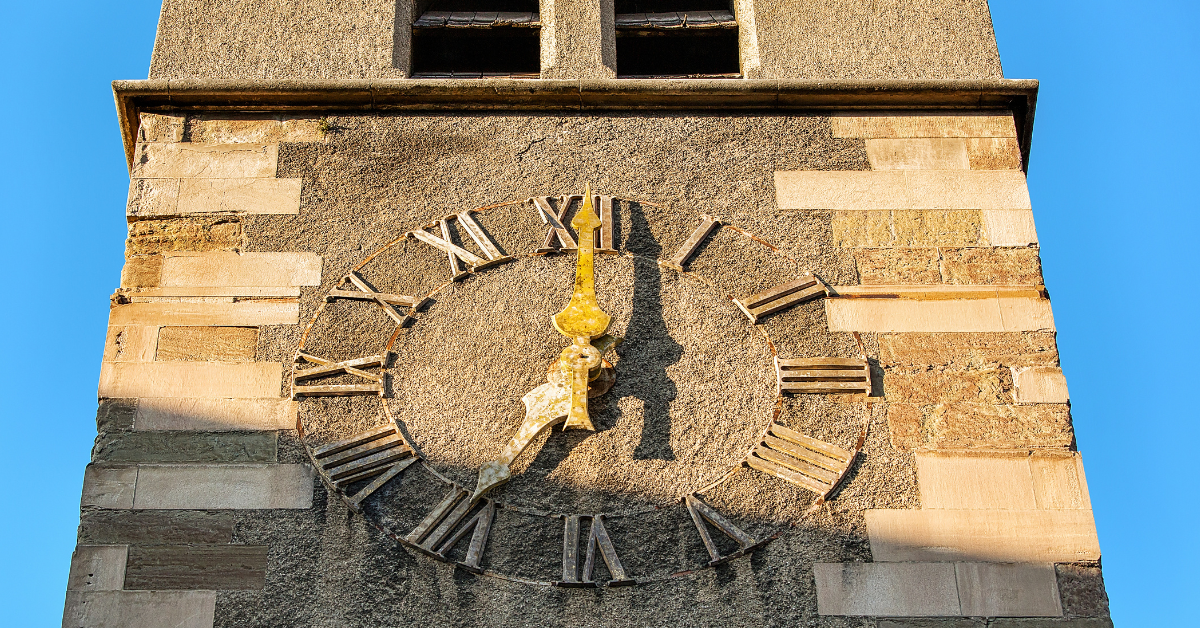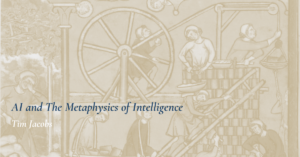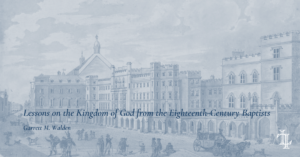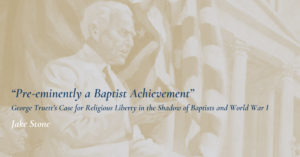Over the past few years, there has been increasing discussion regarding the catholicity of the Reformation. However, this conversation is nothing new. William Perkins’s (1558–1602) well known work, A Reformed Catholike (1598), argued that a “Reformed Catholike… [is] anyone that holds the same necessarie heades of religion with the Romane Church: yet so, as he pares off and reiects all errours in doctrine whereby the said religion is corrupted.”[1]
The use of certain terms in the early modern period can tell contemporary readers quite a bit about what historical figures sought to communicate. Reformed Protestants, even those we might deem as more radical, such as Congregationalists and Baptists,[2] rarely conceded the term “Catholike” to those who acknowledged the Bishop of Rome as the supreme authority of the Church. In fact, the term “Roman Catholic” as we use it today was rarely used by early modern Protestants. Instead, they would enlist terms like “Romane,” “Romish,” and “Romanism.” When speaking about people within the Roman Church, they would not call them “Catholics” as we might naturally call them today. Instead, they called them “papists.” This terminology was used intentionally to deemphasize Roman catholicity, and instead point out Roman particularity. Early modern Protestants argued against Roman concepts of catholicity as visible and emphasized spiritual and invisible concepts of what it meant to be “Catholike.”
This essay will explore the desire for catholicity among Anglo-Protestants in the seventeenth century; a catholicity which rejected Rome as sectarian. We will look at several examples. First, the Irish minister Christopher Blackwood’s (1606–1670) definition of “Catholik” will help us understand how the seventeenth century actors understood their place. This definition of “Catholik” was also used by John Owen, showing that this was commonplace in nonconformity. We will then look at the antipaedobaptist John Tombes (c. 1603–1676), and his 1660 work Romanism Discussed, which shows that certain Reformed Protestants rejected the catholicity of the Roman church and favored the catholicity of the “Reformed Protestant religion.” Blackwood and Tombes are intriguing subjects for such a study given their underrepresentation in contemporary scholarship, in spite of their lasting, even if subterranean, influence. Blackwood, for example, became one of Benjamin Keach’s greatest influences, and Tombes’s work received a commendatory preface by Richard Baxter (though their relationship was complicated). These men fairly represent a majority position among Protestant non-conformists. That majority position recognized that the Reformation was a return to catholic doctrine and practice and a return to the early church.
Christopher Blackwood’s Definition of “Catholik”
Key to understanding how these figures saw their relationship to the church catholic was their very definitions. Rome made claims to catholicity via institution and authority, whereas Protestants often argued for catholicity in terms of spiritual and theological categories. This is seen clearly in the writings of Christopher Blackwood, a Baptist minister in Ireland during the Cromwellian regime. In 1644, Blackwood, a Cambridge educated minister in the established church, began to be convinced of an antipaedobaptist position, believing that baptism was only rightly administered to those who had already professed faith in Christ. After being convinced of credobaptism, Blackwood wrote The Storming of Antichrist as an argument against infant baptism. Blackwood’s work revealed his desire to retain some concept of catholicity for those who were convinced of believer’s baptism. In doing so, he defined “Catholick” as those who belong to the body of Christ, rather than those who are born into a Christian family or society. Citing Ulrich Zwingli, he wrote:
Catholick, [is comprised of] all the elect or body of Christ, borne or unborne, which were purchased with Christs blood (Eph. 5:25). Many men dream of a Catholick visible Church: Jewes and Gentiles are taken into one body (Eph. 2:14). But not in respect of ministeriall dispensation, but of mysticall union. The Fathers were wont to call the Church Catholike, in opposition to Heretikes; and in opposition to the Churches formerly closed up in Judaea, but not dreaming of any such united visible body here upon earth, also in respect that all beleevers had one and the same faith. If all the Churches in a nation make one body nationall, and all bodies nationall make one body Catholike, then must there be a sutable soul to animate this body; but this cannot be Christ nor his spirit, therefore must it be Antichrist; who hath overshadowed the whole world, under the cloud of a visible catholike Church.[3]
Notice that for Blackwood, the “Catholick” church is mystical and invisible. It is not tied to a particular formal office or institution. John Owen similarly made a “visible/invisible” catholic church distinction, arguing that “the Mysticall body of Christ [is his] Elect, Redeemed, Justifyed and Sanctifyed ones throuought the world, commonly called the Church-Catholick-Militant.”[4] Owen went on to comment on the visible church in relation to professing believers gathering in particular churches, writing, “For the Universality of men throughout the world, called by the preaching of the word, visibly professing and yeilding obedience to the Gospell; called by some the Church-Catholick visible… For a particular Church of some place, wherein the instituted worship of God in Christ is celebrated according to his minde.”[5] Blackwood’s consistency with Owen should come as no surprise, given the broad continuity between those of the “Congregational Way” and those who are commonly called “Particular Baptists” today.[6] For Owen and Blackwood, the catholicity of the church is tied, not to a recognition of the papacy or a magisterial institution, but to election, justification, and gathering of those people who have faith into local churches. To be sure, this was common Reformed teaching. Martin Bucer argued similarly that the Roman church’s claims to exclusivity were in themselves schismatic, and that catholicity is based on doctrine and faith. He wrote, “The unity of the church consists not in having the same ceremonies, but in having the same doctrine, faith, and right administration of the sacraments.”[7] It is with these concepts of catholicity as based on mystical and spiritual unity, rather than ecclesiastical unity, that Reformed Protestants in the mid-seventeenth century would understand their place within the tradition. It is also how they understood their relationship with those who we might call “Roman Catholics” and why they denied Romish catholicity.
Blackwood also employed the use of the church fathers and ecumenical councils throughout this work, highlighting the fact that his understanding of catholicity was congruent with the early church:
We shall desire him or any other to prove if he can, that in any place of Justin Martyr’s genuine works, there is so much as the name of infants baptisme, much lesse the thing…Yea, we shall desire him or any other if they can, to prove infants baptisme out of Justin Martyr, Irenaeus, Origen, Clemens Alexandrirus, or Tertullian, which are the fathers next to the Apostles.[8]
Blackwood wanted to prove that his doctrine was consistent with the teachings of the church, and in his view, the patristic witness vindicated his particular branch of Protestantism.
So the question remains, what were the positive or constructive arguments for a true church? Due to his following of Zwingli’s emphasis on the visible/invisible church distinction, Blackwood argued that the signs of a true visible church would reveal the invisible or spiritual catholicity of that church. He named things like agreement and consent to doctrine, the Word and the sacraments, ministers called by the Holy Spirit, church discipline, and individual professions of faith.[9] These professions of faith in a visible church, for Blackwood, are necessarily tied to spiritual catholicity, writing, “As faith makes us members of the Catholick, so the profession hereof concurs to make us members of the visible Church.”[10] Again, the emphasis on faith and doctrine, rather than inclusion in a purely visible entity is the true test of whether one is catholic or not. For Blackwood, membership in the catholic church precedes membership into a visible church.
John Tombes and “Romish Religion”
John Tombes was one of the most prominent antipaedobaptist authors in the mid-seventeenth century. During the Restoration of Charles II to the monarchy, reversing the Cromwellian regime of the previous decade, many Baptists remained quiet relative to their published output before, and several years after, the Restoration.[11] Tombes, however, maintained a steady output from 1660 to the Great Ejection of 1662, when he decided to remain a lay communicant in the Church of England. With Charles’s ascension came a new wave of worry about the looming threat of Rome to the English Protestant cause. It is in this context that we see Tombes’s work, Romanism Discussed, one of the strongest cases against Rome and for Protestantism during this time.
Tombes’s work against the Roman church reveals that not only did he view the Protestant church (and by extension his antipaedobaptist church) as catholic, but he refused to view the Roman church as such. He was attempting to prove that the “Roman Religion” was “falsly called Catholick,” and that Protestantism was not sectarian as Rome had argued.[12] Tombes’s use of certain terminology, or lack thereof, is noteworthy here. Like others in the Reformation and post-Reformation period, Tombes wanted to maintain the catholic identity of the Protestant religion, while at the same time, deny catholic identity to those who followed the bishop of Rome. Tombes never referred to those who follow the Bishop of Rome as “Roman Catholic.” Instead, he used the common pejoratives of the day such as “Romish,” “Papist,” and “Popish.” Because of his disagreements with Rome, he had no desire to concede the term, and therefore the concept, of a “Roman Catholic” church.
According to Tombes, there were two pillars on which the “Roman Religion” rested: papal supremacy and infallibility.[13] It is under these two points that Tombes sees all other subpoints of disagreement with Rome. Supremacy shows the difference in structural authority, while infallibility shows the difference in teaching authority. Elaborating on these points, Tombes wrote:
Certainly, these two Points which are the Pillars of the Religion of the Roman party are so far from being Catholick, that to him that shall impartially examine the Proofs, it will appear, that they have been late Innovations, and are yet contradicted by a great part of those Churches which hold communion with the Roman See. And for many other Points of your Religion, if you would either use your Senses or your understanding in judging by the Scripture, translated by your own party, what is true or false, you could not be so besotted as to believe Transubstantiation, Invocation of deceased Saints, Justification by your own Works, and their Meritoriousness of eternal Life, Purgatory fire, Prayer for the Dead, another Propitiatory Sacrifice for Quick and Dead besides Christ’s, Communion under one kinde onely, Worshipping of Images and Reliques, with some other of your Tenets.[14]
Worthy of note here is that Tombes was arguing that the “Roman party [were]… far from being Catholick.” He did not want to concede the concept of catholicity to Rome. The second thing to note is that Tombes saw things like purgatory, transubstantiation, worshipping of images and the like, as innovations and, therefore aberrations from catholic teaching. In arguing against what he viewed as man-made inventions in worship and the Christian life, he was attempting to argue that Protestantism, with its stripping down of manmade tradition, was closer to the religion, not just of the New Testament, but to the church fathers as well.
Tombes’s use of the fathers can help us grasp his understanding of catholicity, because he viewed himself as in continuity with the fathers. Instead, it was Rome who found themselves out of step with the tradition. Tombes cited Irenaeus of Lyons, Cyprian of Carthage, and Augustine as giving no power to the Bishop of Rome in the same way that his contemporaries were, writing, “And for Fathers of the first 500 years, neither do any of the Fathers… ascribe to Peter such a supremacy over the Apostles and the whole church, as the Romanists assert; nor would any man imagine, that Irenaeus, Cyprian, or Augustine, should intend such a supremacy to the Bishop of Rome.”[15] To be clear, Tombes was not denying the historical facts that some Christians did recognize the Bishop of Rome as a higher authority, he was simply arguing that there was diversity in the tradition, claiming, “In all the ages before, the most [that Papists] can produce is, that after the five or sixth first Centuries, some in each age held some of the points now held by the Papists, but denied by Protestants.”[16] Notice the language here. Some in each age held some of the points now held by the Papists. Tombes refused to allow the umbrella of Papal supremacy to loom over the entirety of church history.
Tombes continued his argument for diversity in the tradition, as well as continuity with figures denying supremacy, by appealing to John Duns Scotus’s arguments against transubstantiation. For Tombes, Scotus was a key witness to the idea that transubstantiation was not the set dogma in the church until the thirteenth century. Tombes cited Scotus directly, writing, “Scotus in quartum sent. Dist. 11. Q. 3. Saith, ‘that the tenant of transubstantiation was no tenet of faith before the Lateran Council,’ and Scotus and Cameracensis expressly say, that ‘neither by words of Scripture, nor by the Creeds, nor saying of the ancient are we compelled to the tenet of transubstantiation.’”[17]
Again, this bolsters Tombes’s case for Protestant catholicity. While the “Roman Catholics” were arguing, for example, that Protestants didn’t take the Lord’s Supper seriously, Tombes disagreed, using Scotus, writing that “there are Protestants, that grant a real presence of our saviour’s body in the Eucharist, as the Lutherans, and some Calvinists grant also a real presence to the worthy receiver, but not bodily, but for the real presence by Transubstantion there is not the least in Scripture of itself, as Scotus long ago resolved.”[18] Interestingly, some modern scholars have coined Scotus’s view as “real presence,”[19] which would only serve to further prove Tombes’s point that Protestants did not pluck their theology out of nowhere, but that it is in some sense catholic. On the flipside, in Tombes’s view, it was transubstantiation which was thrust upon the church from the outside, thereby making its dogma the sectarian thing to hold. Tombes made many more patristic and medieval appeals throughout this treatise, but these two examples give a good summary of his desire to use the Christian past to argue for Protestant catholicity.
Conclusion
Early Modern antipaedobaptists like Blackwood and Tombes were battling for recognition as Orthodox Christians from all sides. Even their fellow Protestants sometimes denied their catholicity. However, as we have seen, these figures wanted to prove their own catholicity while disproving the claims to exclusivity that Rome asserted, and they were liberal in their use of figures from the Christian tradition to aid in their arguments. For these Protestants, the catholic church is mystical and invisible, gathered visibly by local bodies of baptized believers who live together by faith. Catholicity is based on faith and practice, as opposed to institution and office. This also meant, according to Tombes and Blackwood, that those who made claims to catholicity based on Papal and Magisterial supremacy were themselves, “falsly called Catholick.”
[1] William Perkins, A Reformed Catholike: Or, A Declaration Shewing how Neere we may Come to the Present Church of Rome in Sundrie Points of Religion: And Wherein we must for Euer Depart from them with an Advertisment to all Fauourers of the Romane Religion, Shewing that the Said Religion is Against the Catholike Principles and Grounds of the Catechisme (Cambridge, 1598), p. unnumbered.
[2] I am claiming that Particular Baptists should be considered among the Reformed Orthodox. See Richard A. Muller, ‘Diversity in the Reformed Tradition’ in Michael A. G. Haykin and Mark Jones (eds), Drawn Into Controversie: Reformed Theological Diversity And Debates Within Seventeenth-Century British Puritanism (Göttingen: Vandenhoeck & Ruprecht, 2011), p. 29; Cf, Willem J. van Asselt (ed), Introduction to Reformed Scholasticism (Grand Rapids: Reformation Heritage, 2011), p 179; Cf, Jonathan W. Arnold, The Reformed Theology of Benjamin Keach (Oxford: Centre for Baptist Studies, 2019).
[3] Christopher Blackwood, The storming of Antichrist, in his two last and strongest garrisons; of compulsion of conscience, and infants babptisme (London, 1644), 6–7.
[4] John Owen, Of Schisme the True Nature of it Discovered and Considered, with Reference to the Present Differences in Religion (Oxford, 1657), 83–84.
[5] Owen, Of Schisme, 84.
[6] Matthew C. Bingham, Orthodox Radicals: Baptist Identity in the English Revolution (Oxford University Press: Oxford, 2019), 4.
[7] Martin Bucer, Concerning the True Care of Souls, translated by Peter Beale (Banner of Truth: Edinburgh, 2009), xxxiv.
[8] Blackwood, The storming of Antichrist, 27.
[9] Blackwood, The storming of Antichrist, 7–9.
[10] Blackwood, The storming of Antichrist, 9.
[11] The major exception to the quietness were the various letters and apologies from the likes of Kiffen, Knollys, and others (including Tombes).
[12] John Tombes, Romanism Discussed, Or, an Answer to the Nine First Articles of H.T. His Manual of Controversies. Whereby is Manifested, that H.T. Hath Not (as He Pretends) Clearly Demonstrated the Truth of the Roman Religion by Him Falsly Called Catholick, by Texts of Holy Scripture, Councils of all Ages, Fathers of the First Five Hundred Years, Common Sense, and Experience, nor Fully Answered the Principal Objections of Protestants, Whom He Unjustly Terms Sectaries. by John Tombes, B.D. and Commended to the World by Mr. Richard Baxter, Manuel of controversies (London, 1660), p. unnumbered.
[13] Tombes, Romanism Discussed, p. unnumbered.
[14] Tombes, Romanism Discussed, p. unnumbered.
[15] Tombes, Romanism Discussed, 2.
[16] Tombes, Romanism Discussed, 13.
[17] Tombes, Romanism Discussed, 29.
[18] Tombes, Romanism Discussed, 199–200.
[19] Marilyn McCord Adams, Some Later Medieval Theories of the Eucharist: Thomas Aquinas, Gilles of Rome, Duns Scotus, and William Ockham (Oxford University Press, Oxford, 2010), 111, 114.
Author
-

Jared N. Mays (MA, The Southern Baptist Theological Seminary) is a Pastoral Intern at Great Victoria Street Baptist Church in Belfast, Northern Ireland and a Global Worker with Reaching & Teaching International Ministries. He is also a PhD student in Early Modern History at Queen’s University Belfast.
View all postsRecent Posts



